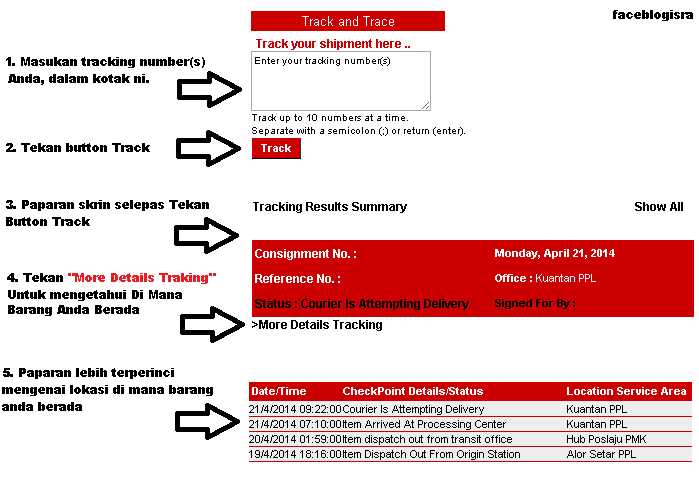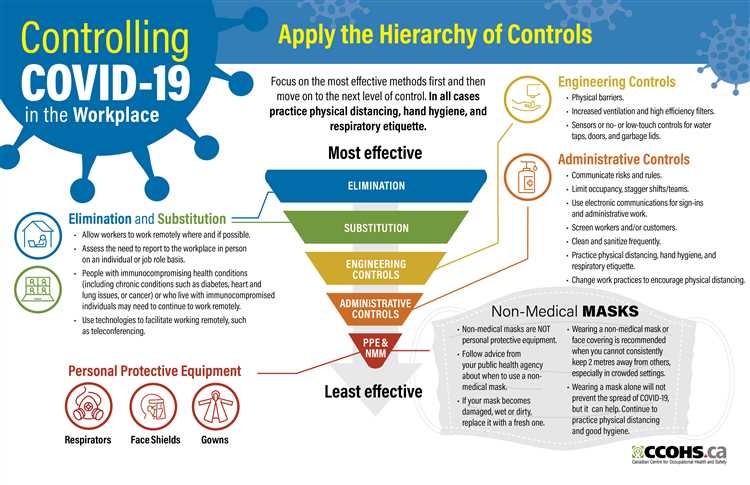Contpark specializes in offering a robust terminal management solution. Its platform includes features for real-time visibility, workflow automation, and security, simplifying terminal operations and increasing productivity.

Consignment and shipment are crucial elements in the supply chain process. When it comes to shipping goods, it is important to understand the various aspects involved, such as dock, inventory, shipping company, and shipping line. The dock is where the loading and unloading of cargo take place, while inventory management ensures that the right goods are available for shipment.
To ensure smooth movement of goods, it is essential to select a reliable shipping company and track the shipment’s status. The shipper should receive a shipment confirmation and have access to detailed information about shipping times, shipping rates, and shipping charges. The shipping department plays a vital role in arranging the transportation of goods, selecting the appropriate shipping method, and preparing the necessary shipping documents.
Packing plays a crucial role in protecting the goods during transit. Each package should be properly labeled with shipping labels and packed according to the shipping policy to avoid damage. For larger shipments, containers or vehicles may be used to transport the cargo, and additional cargo handling may be required.
Consignment involves the transfer of goods from a seller to a consignee. It requires customs clearance and documentation, including a packing slip and a manifest. Freight forwarding agents can assist in coordinating the transportation and forwarding of goods to the consignee. They also provide shipping supplies and offer solutions for oversized or special shipments.
Understanding the process of consignment and shipment is crucial for distributors and sellers who rely on timely and efficient delivery of goods. By paying attention to details such as shipping instructions and ensuring proper labeling and documentation, businesses can ensure that their shipments reach the intended recipients in a timely manner

Consignment refers to the act of consigning goods to a third party for sale or transportation. The consignor (Exporter) entrusts the consignee (Carrier) with the goods, who then transfers them to the buyer. This method of selling allows the consignor to have more control over the goods while they are being sold, as they do not belong to the consignee until they are actually sold. Consigning goods is a common practice in the retail industry, as it allows retailers, wholesalers, and suppliers to have a wide range of products without having to carry the inventory themselves.
Shipment is the process of transporting goods from one location to another. It involves various stages, including packing, labeling, and arranging for transportation. A shipping carrier or transporter is responsible for the physical movement of the goods from the consignor to the consignee. The goods are typically placed in a shipping container, such as a pallet or package, before being loaded onto a transportation vehicle.
During the shipment process, it is important to ensure the safe delivery of the goods. This can be done by opting for shipping insurance, which provides financial protection in case of loss or damage to the goods. Additionally, a forwarding agent may be hired to handle the logistics of the shipment, such as customs clearance and documentation.
Tracking the shipment is an essential part of the process to monitor its progress and ensure timely delivery. Shipment notifications can be sent to the consignor and consignee to keep them informed about the status of the shipment. Shipping charges or freightage are the fees charged by the carrier for transporting the goods.
The shipping policy of a company outlines the terms and conditions for shipping, including shipping fees, return policies, and delivery timeframes. The shipping weight of the goods plays a role in determining the cost of shipping, as heavier items may require additional handling and resources.
All cargo handling and warehousing activities are performed in warehouses, which serve as storage facilities for the goods during the shipping process. To ensure accurate delivery, shipping labels are applied to the packages or containers, containing information such as the sender, receiver, and shipping address. These labels help in sorting and routing the packages correctly.
Driving or transporting the goods is done by the carrier or shipping line, who are responsible for the safe and efficient movement of the cargo. The shipping date refers to the date on which the goods are scheduled to be shipped from the consignor’s location.
In summary, consignment involves entrusting goods to a carrier for sale or transportation. The shipment process is then carried out by the carrier, involving various steps such as packaging, labeling, transportation, and delivery of the goods. Effective management of consignment and shipment is crucial for successful supply chain operations.
A consignment refers to the act of sending goods, products, or items to another party, known as the consignee, for a specified purpose. It involves the transfer of ownership of the goods, although ownership may not be immediate. The seller or distributor, also known as the consignor, stocks the goods in their inventory until the consignee initiates an order or demand for them.
Shipment, on the other hand, refers to the process of transporting goods from one location to another. It involves various stages such as oversize handling, freightage, customs clearance, and transportation. The shipment process typically begins with the consignment being packed and labeled with a shipping label. The shipping document, such as a bill of lading, is prepared to detail the contents, destination, and shipping method.
Once the shipment is ready, a notification is sent to the consignee, providing information such as the shipment status, shipping updates, and estimated delivery date. The consignee may choose to hire a forwarding agent or transporter to handle the logistics of the shipment, including the selection of the appropriate shipping method and arranging for necessary storage or trucking services.
Shipping insurance is often recommended to protect against any potential damage or loss during transit. The cost of shipping, including freightage, shipping rate, and customs fees, are usually borne by the consignee unless otherwise agreed upon in the shipping policies. Upon receiving the shipment, the consignee will inspect and unload the goods, ensuring they match the shipping documents and are in good condition.
The shipping process may also involve consolidation, where multiple consignments are combined into a single shipment to reduce costs and improve efficiency. Throughout the shipping process, tracking is essential to monitor the location and progress of the shipment. The consignee can track the shipment using the shipping agent’s tracking system or platform.
Overall, consignment and shipment are crucial aspects of the supply chain and play a significant role in ensuring the successful transfer of goods from the seller to the buyer. Proper handling, storage, and transportation are essential to guarantee timely delivery and customer satisfaction.
A consignment is a process where a shipper or exporter entrusts their products or goods to a forwarding agent for transportation to the intended destination. The shipping process involves various steps that ensure the safe transit of the package from the seller to the buyer.
The shipment process begins with the shipper or seller preparing the goods for transportation. This includes packaging the items securely and ensuring they are ready for loading onto a truck or container. The shipper may also need to arrange for shipping supplies, such as pallets or containers, to ensure the safe handling of the goods during transit.
Once the goods are ready for shipment, the shipper will contact a forwarding agent or shipping service to coordinate the pickup. The shipping service will provide a shipping date and estimate the shipping cost based on factors such as the weight and dimensions of the package, shipping rates, and any additional services requested by the shipper, such as shipping insurance.
On the day of the shipment, the trucking or vehicle used for transportation will arrive at the shipper’s location. The shipper will hand over the package to the driver, who will then load it onto the truck or container. The driver will provide a shipment confirmation to the shipper, which includes a receipt and any necessary shipping documents.
During transit, the package will be transported to the intended destination. This may involve multiple modes of transportation, such as trucking, air freight, or sea freight, depending on the distance and destination. The package will be tracked throughout its movement, and the shipper may receive shipping notifications or updates on the shipment’s progress.
Once the package arrives at its destination, it will be unloaded from the truck or container. The recipient, whether it be the buyer or a distributor, will then receive the goods and confirm their arrival. The shipping service may require a signature or proof of delivery from the recipient.
In some cases, if the recipient is unsatisfied with the goods or there is a need for a return, the shipping service can handle the import or export process and facilitate the return of the package to the shipper.
In summary, consignment and shipment involve the process of transporting goods from a seller to a buyer or recipient. It requires coordination between the shipper, forwarding agent, and shipping service to ensure the safe and timely movement of the package. Throughout the process, various shipping documents, receipts, and shipping notifications are provided to track and confirm the shipment’s progress.
Consignment offers several benefits for both the buyer and the seller. One of the main advantages is that the seller can avoid the cost of carrying excess inventory by relying on consignees to stock and sell their products. This allows the seller to focus on the production and supply of goods without the burden of storage and transportation logistics.
For the consignee, the benefit lies in having access to a wide variety of goods. They can expand their product offerings without the need to invest in purchasing inventory upfront. The consignee can also reduce the risk of dead stock by returning unsold goods to the seller.
When it comes to shipment, consignment offers flexibility in terms of shipping times and methods. The consignee can provide their shipping address to the seller, who will then arrange for the package to be shipped using a shipping carrier. The consignee can choose to use their own shipping carrier or rely on the seller’s preferred carrier. This ensures that the goods can be transported efficiently and arrive at the consignee’s location on time.
In addition, consignment shipment allows for easy tracking and return of goods. Both the seller and the consignee can monitor the status of the shipment with shipping updates and labels. If there is a need to return or exchange the goods, the consignee can follow the seller’s shipping policy and procedures.
Overall, consignment shipment simplifies the process of transferring goods from the seller to the consignee. It offers benefits such as cost savings, inventory management, and flexible shipping options. Whether it’s a small package or a large cargo, consignment shipment ensures smooth transportation and delivery of goods.
Shipment plays a vital role in increasing revenue potential for businesses. By effectively managing the shipping process, companies can ensure timely delivery of products to customers, which leads to customer satisfaction and repeat purchases. Choosing the right shipping method and understanding shipping terms can optimize the shipment process.
Membership with a trusted shipping company or a forwarding agent can provide access to exclusive benefits and discounted shipping rates. Companies can save money on shipping costs, which directly impacts their bottom line. Additionally, having clear shipping instructions and utilizing proper packaging can minimize the risk of damage during transportation.
The use of shipping labels and tracking technology enables businesses to monitor the shipment status and provide shipping updates to customers. This not only improves transparency but also instills trust in the customers. Furthermore, efficient cargo handling and transportation logistics ensure that items are stored properly and transported safely.
It is important for businesses to have well-defined shipping policies to manage the shipping process effectively. This includes setting clear guidelines for return and receipt of shipments, as well as establishing protocols for trucking and dispatch. By streamlining the shipping process and having a reliable shipping company in place, businesses can enhance their overall supply chain efficiency.
The process of shipping and shipment involves the movement and transportation of goods from a supplier or consignor to a consignee. This transportation can be done by various means such as trucking, freight forwarding, or transportation by sea.
When preparing for shipment, several documents and labels are required. These include shipping labels, packing slips, and shipping documents. The shipping label contains information such as the destination address, shipping weight, and the name of the carrier or shipping company.
Once the goods are packed and labeled, they are ready to be loaded onto a truck or container for transport. The transportation company or transporter is responsible for the haulage and unloading of the cargo at the dock. At this stage, it is important to ensure that the goods are properly secured and protected during transportation.
During the shipping process, it is crucial to have shipment tracking in place. This allows the consignee and the supplier to know the whereabouts of the goods at all times. Shipment tracking also helps in identifying any delays or issues that may occur during transit.
Reducing inventory costs is another benefit of efficient shipping. By streamlining the fulfillment and shipping process, businesses can minimize the amount of stock they need to keep on hand. This helps to optimize warehouse space and reduce storage costs.
Shipping costs and charges are also a consideration when planning shipments. These costs include freightage, customs fees, and shipping insurance. By carefully considering these factors, businesses can minimize their shipping expenses and maximize their profit margins.

When it comes to expanding your business and reaching a wider customer base, efficient shipment and logistics are crucial. By partnering with a reliable freight forwarding agent, you can ensure smooth loading and shipping processes.
A key aspect of successful shipment is choosing the right shipping carrier and route. It is important to consider factors such as shipping time, freight costs, and shipping terms to make informed decisions. Proper packing and labeling of shipping containers, along with accurate packing slips, are essential for smooth cargo handling and customs clearance.
Once your shipment is on the move, it is important to stay updated on its status. Shipment notifications and tracking systems allow you to monitor the movement of your goods and ensure timely delivery. In case of any issues or delays, having shipping insurance can provide financial protection.
When the shipment reaches its destination, it is important to have a clear shipping policy in place. This includes determining the return policy, if applicable, and dealing with any damaged items. Efficient inventory management helps in keeping track of incoming and outgoing shipments, ensuring smooth operations.
In conclusion, efficient shipment and logistics are crucial for businesses looking to access a wider customer base. By understanding and implementing proper shipping policies, partnering with reliable forwarders, and staying updated on shipment status, businesses can ensure smooth and timely deliveries while expanding their reach.
When it comes to transporting goods, there are two main methods: consignment and shipment. While both involve the movement of goods from one location to another, there are important distinctions between the two.

Consignment refers to the process of delivering goods to a consignee for sale or distribution. In this case, the exporter entrusts their goods to a storage or distribution facility, where they are held until a buyer is found. The consignee is responsible for selling the goods and will receive a percentage of the sales as compensation.
When consigning goods, it is important to provide detailed shipping instructions to ensure the goods are handled correctly. This includes specifications on packaging, shipping options, and any special requirements. The consignee will then arrange for transportation, such as pickup by a trucking company, and handle the logistics of transit.
Shipment, on the other hand, refers to the process of transporting goods from one location to another. It involves the loading of goods onto a vehicle, such as a truck or shipping container, and the arrangement of transport to the desired destination.
Unlike consignment, shipment does not involve the sale or distribution of goods. Instead, it focuses solely on the physical movement of the goods. The exporter is responsible for packaging and preparing the goods for shipment, as well as ensuring they are loaded securely onto the chosen transport vehicle.
Both consignment and shipment come with their own set of considerations and costs. Consignment involves additional steps, such as finding a consignee and determining the terms of the sales agreement, which can impact shipping costs. Shipment, on the other hand, may require additional services such as shipping insurance or customs documentation, depending on the nature of the goods and the destination.
Understanding the difference between consignment and shipment is crucial for anyone involved in the supply chain and transportation of goods. By knowing the specific requirements and processes associated with each method, exporters and transporters can ensure a smooth and efficient delivery of goods.
In the world of logistics, understanding the concept of a shipment is crucial. A shipment refers to the transportation of goods or merchandise from one location to another. It involves the process of moving items, products, or materials through various stages, such as packaging, handling, fulfillment, and arrival.
When it comes to shipment, there are several key players involved. The shipper is the individual or company responsible for sending out the goods, while the consignee is the recipient or importer. The supplier or seller is the party responsible for providing the goods, products, or materials. A carrier, such as a shipping company or haulage service, is the entity that transports the shipment using a vehicle, such as a truck or ship.
Shipment also involves various documents and labels. A shipping invoice and bill of lading are some of the essential paperwork required to initiate the transfer of goods. Shipping labels are used to identify and track the packages, while a packing slip provides a detailed list of the contents. A shipping container is the storage unit used to hold the goods during transportation.
Shipping services offer a range of options for sending out shipments. Importers or shippers can choose from different shipping rates and select the most suitable method based on their needs. Shipment tracking is also available, allowing individuals to monitor the progress of their shipments and receive shipping updates and notifications.
Once the shipment arrives at its destination, unloading and handling take place at the warehouse or designated location. The consignee receives the shipment and may sign a receipt to confirm its delivery. A shipping document, such as a freight bill or delivery order, is often provided to finalize the transaction and update the inventory.
In summary, shipment involves the supply and transportation of goods from one location to another. It requires coordination between shippers, carriers, and consignees, as well as the use of various documents and labels. Understanding the different aspects of shipment is essential for successful logistics operations.
Shipment is the process of transferring goods or cargo from one location to another. It involves various steps such as packing, labeling, loading, unloading, and transportation. There are several pros and cons associated with shipment that should be considered before making a decision.
Before opting for shipment, it is important to carefully consider these pros and cons to make an informed decision. Proper planning, communication with the shipping company, and understanding the shipping policies and requirements are crucial for a successful shipment.
When preparing items for consignment shipment, there are several important steps to take in order to ensure a smooth delivery process. Here are some key points to consider:
Proper packaging is essential to protect your items during transit. Use sturdy boxes or crates and make sure they are securely sealed. For fragile or valuable items, consider using padding or bubble wrap to provide extra protection.
Clearly label each package with the necessary information, such as the recipient’s address, your return address, and any tracking numbers or barcodes. This will help to ensure that your items are correctly identified and delivered to the right location.
Consider purchasing shipping insurance to protect your items against loss or damage during transit. This additional coverage can provide peace of mind and help to mitigate potential financial losses.

If you have oversize items that cannot be easily packaged in a standard box or crate, consider using a pallet. This will allow for easier handling and transportation by forklift or other equipment.
It is important to keep track of your inventory when preparing items for consignment shipment. Make sure to accurately record the quantity and condition of each item to ensure proper documentation and accountability.
Research shipping times and routes to determine the most efficient and cost-effective options for your consignment shipment. Consider factors such as the shipping line, haulage rates, and any specific requirements or preferences of the recipient.
By following these steps and properly preparing your items for consignment shipment, you can ensure a smooth and successful delivery process. Remember to communicate effectively with your shipping agent or shipper, and keep track of the shipment status through manifests and shipping notifications. With careful planning and attention to detail, you can minimize the risk of delays or problems and deliver your items to the recipient in a timely manner.
Consignment is a business arrangement where a person or company known as the consignor brings their items to a consignment store or shop to sell them on their behalf. The store, known as the consignee, will display and sell the items, and the consignor will receive a percentage of the sale price.
Consignment has several benefits. It allows individuals to sell their items without having to open their own store or deal with the hassle of selling items online. It also provides an opportunity to sell larger items that may be difficult to ship. Consignment shops often have an established customer base, which can increase the chances of a successful sale.
To prepare items for consignment, start by cleaning them thoroughly. This includes dusting, polishing, and washing if necessary. Make any necessary repairs or touch-ups to ensure the items are in the best possible condition. Take clear and well-lit photos of each item to showcase its features. Finally, research the consignment store’s guidelines and requirements for accepting items and ensure your items meet their criteria.
Consignment stores typically accept a variety of items, including clothing, accessories, furniture, home decor, electronics, and collectibles. Some stores may specialize in specific categories, so it’s best to inquire about what they are interested in accepting before bringing your items in.
If your items don’t sell on consignment, each store will have its own policy. Some stores may offer the option to lower the price or extend the consignment period. Others may require you to pick up the unsold items or they may donate them to charity. It’s important to clarify these details with the consignment store before entering into an agreement.